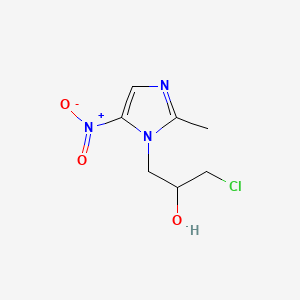Amoebic dysentery
Adult: 1,500 mg as a single daily dose in the evening for 3 days. Patients weighing >60 kg: 1,000 mg bid for 3 days.
Child: ≤35 kg: 40 mg/kg as a single daily dose for 3 days; >35 kg: Same as adult dose.
Child: ≤35 kg: 40 mg/kg as a single daily dose for 3 days; >35 kg: Same as adult dose.
Oral
Giardiasis
Adult: 1,500 mg as a single daily dose in the evening for 1-2 days.
Child: ≤35 kg: 40 mg/kg as a single daily dose for 1-2 days; >35 kg: Same as adult dose.
Child: ≤35 kg: 40 mg/kg as a single daily dose for 1-2 days; >35 kg: Same as adult dose.
Oral
Prophylaxis of postoperative anaerobic bacterial infections
Adult: 1,500 mg 12 hours prior to surgery, then 500 mg 12 hourly for 3-5 days postoperatively.
Oral
Amoebiasis
Adult: 500 mg bid for 5-10 days.
Child: ≤35 kg: 25 mg/kg as a single daily dose for 5-10 days; >35 kg: Same as adult dose.
Child: ≤35 kg: 25 mg/kg as a single daily dose for 5-10 days; >35 kg: Same as adult dose.
Oral
Trichomoniasis
Adult: Acute cases: 1,500 mg as a single dose to be given in the evening. Chronic cases: 500 mg bid for 5 days. Treat sexual partners concomitantly.
Child: 25 mg/kg as a single dose.
Child: 25 mg/kg as a single dose.




 Sign Out
Sign Out




